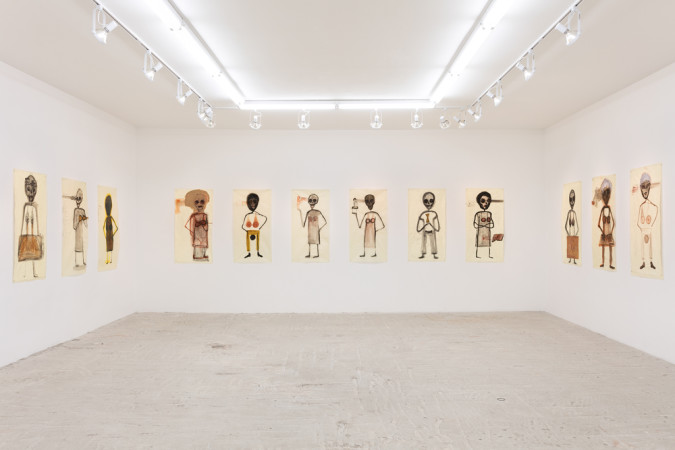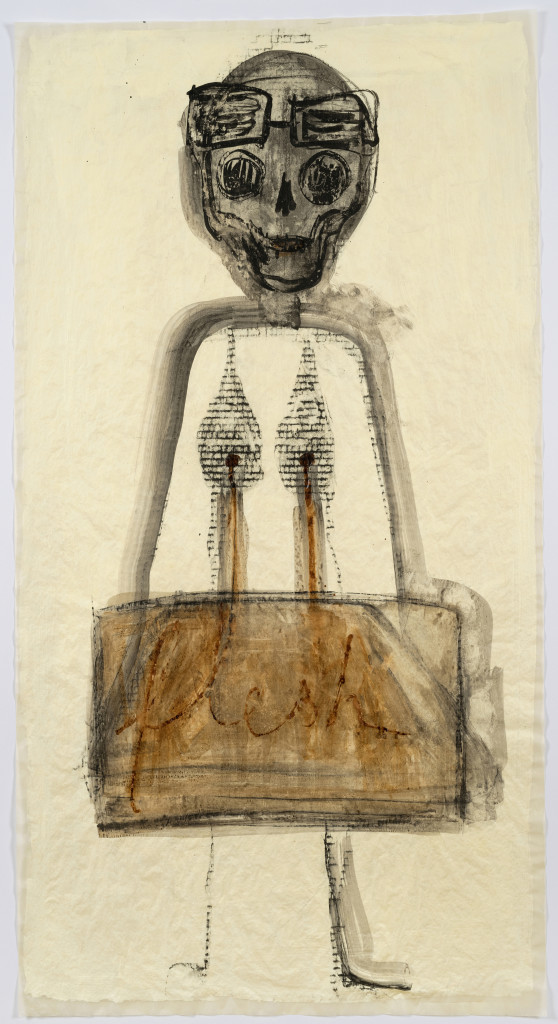Mira Schor
Mira Schor is a New York-based artist and writer known for her advocacy for painting in a post-medium culture, for her representations of writing as image, and for her writings on painting and on feminist art history. Her parents were the Polish-born artists Ilya Schor and Resia Schor. Her work has been included in exhibitions at the Jewish Museum in New York City, The Hammer Museum, P.S.1, the Neuberger Museum, and the Aldrich Museum. She participated in ARTspace’s Annual Distinguished Artists’ Interviews at the 2013 Annual College Art Association Conference in New York. Schor is the author of A Decade of Negative Thinking: Essays on Art, Politics, and Daily Life and of Wet: On Painting, Feminism, and Art Culture and of the blog A Year of Positive Thinking. Schor is the recipient of a Guggenheim Fellowship in Painting, the College Art Association’s Frank Jewett Mather Award in Art Criticism, and the Creative Capital / Warhol Foundation Arts Writers Grant. Her current show Death Is A Conceptual Artist at Lyles & King Gallery includes new paintings that explore the link between the artist, nature, the body, and language and an installation of twenty-five large, delicate, and darkly satirical figurative drawings on the condition of the woman artist.
Question:
In the drawings and paintings from the last few years, including your most recent work in “Death is a Conceptual Artist”, a solitary figure sits, reclines or stands, lost in thought, marked by their solitude. Can you talk about the role solitude plays in your work in the studio, in your writing and your political activism?”
Answer:
Many of the works you mentioned, representing a solitary figure reading and thinking, have been done since my older sister and then my mother died. I never married and I have no children. My father died when I was eleven—a loss which shaped my life: I learned to gain strength from within and found it where I already was, even as a child, in art making, day-dreaming, study, and writing.
Before all these direct personal losses, my parents had lost both their extended families and the close friends of their youth in the Holocaust. At the end of Claude Lanzmann’s Shoa, a freedom fighter speaks of sitting alone in the ruins of the Warsaw Ghetto. He says, ”At one point I recall feeling a kind of peace, of serenity. I said to myself: ‘I’m the last Jew. I’ll wait for morning, and for the Germans.’” I’m not placing myself in such a condition of utter ontological, historical aloneness but I do sometimes feel I too am the last Jew, metaphorically speaking.

Mira Schor, “Power” Figures, Installation, Death Is A Conceptual Artist, Lyles & King Gallery, New York City, March 18-April 24, 2016
By the time I left graduate school I had articulated an agenda, which was to bring my experience of living inside a female body–with a mind–into high art in as intact a form as possible. The terms have changed their meaning yet each work I do begins from the inside out, who am I within my life, my embodiment, my feelings, and my relation to the world at the very moment I am starting the specific work. I lose interest in a series of works once I have learnt how to do them too well and am styling variations rather than making that connection of presentness which is impelled by necessity and starts with interiority.
Solitude can be productive but even the rougher condition of loneliness is an important state, the ability to withstand it until you get to the other side. To get to the point where the work is a living indexical trace of who I am at that moment, I have to push through the intense loneliness that is necessary to making art that isn’t just production, and the loneliness paradoxically comes from not having been able to work in the studio for any length of time. The pressure builds up.
Writing is a more social practice: it takes place within discourse, it emerges from teaching, I try ideas out in conversation—I love to talk, love to talk on the phone except so few people do that anymore—and I run texts past friends when I feel I’m out on a long limb. I write because it offers a mean of engagement and address that is totally different than painting, but to accomplish it I do need time alone to experience art and text, gather my thoughts, and find a necessity to give order to the words.
I used to be able to have the TV or the radio on as background to keep me company, but now if I really want to focus I need silence. But what I want to achieve in the work is a tone, I can’t quite describe it, like the after effect of a clear bell. I don’t know, once in Provincetown I was reading in the garden when suddenly I sensed a different kind of quiet: there had been a power failure and the quiet was the elimination of even the underlying hum of electricity all around us that we normally don’t notice. The tone I seek in my work is somewhere between the hum and the silence.
I have a strong interest in narrative which is personal and also very much political–the female body-with a mind—but at the same time I have always been drawn to sculptural figuration: I love the singular, columnar figures in Egyptian and Gothic Art—I always include in the postcards I put up on my studio wall old black and white details from the North Portal at Chartres Cathedral.
Another sculpture jumps into my mind, that I saw in Florence in 1985, Donatello’s Mary Magdalene, as alone a woman as you will ever see in art. I didn’t have her in mind when I did the figures in my show but my women, each older and alone, pursued by language from the world, seem to speak to her.
The “’Power’ Figure” drawings I worked on this year were inspired by the Mangaaka figures in the recent Kongo: Power and Majesty show at the Met—each one reached out with so much emotion and presence but they gained power from being exhibited as a gathering.
My “’Power’ Figures” also gain from each other’s company: the way they are installed in the gallery, they are a platoon of powerful figures/powerless women. In that way they represent what feminism has given me, which is a lifelong web of personal and political support that breaks me out of a political solitude which would be very difficult to endure.
I love Giacometti’s work, if anything his paintings and drawings even more than his sculpture–although The Palace at 4 A.M. is one of my favorite works. There was a drawing in the home of friends that I used to stare at as a child. What I like about his paintings is that though they each represent a solitary figure, there is a world in each work—the world of painting and of drawing. My works do represent a solitary figure in a shallow emptied space but there is much from the world in each work–landscape, however diagrammatic or schematic; language, ideas and phrases from books I read, language from politics or from the junk emails we all get; and the expressiveness of line and surface– these formal material components are living presences.







